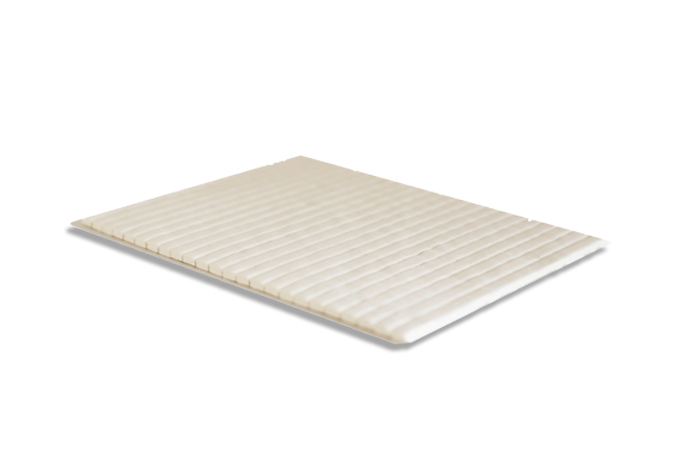RCS 530 | Rubber Cleaning Sheets
- Prestage cleaning
- Dissolving characteristics
- No mold abrasion
Product Description
RCS 530 Rubber cleaning sheets are mainly used as first stage dissolvers for messy molds before RCS 320 comes into play. A combination of RCS 530 for pre treatment and RCS 320 ensures amazing cleaning results. This first stage is also commonly achieved by transfer cleaning pellets but RCS 530 has the advantage of retaining the same application method throughout the cleaning and conditioning process. Stage, Clean, Condition, all done with sheets.
RCS 530 softens the yellow volatile remains of the molding processes and RCS 320 comes right after to finish the job. They can both be used independently but a combination is suggested for excellent results on the most persistent stains.
RCS 530 sheets perform well in a wide range of molds, are able to withstand a torque of 10 lb-in to 46 lb-in and have a curing time of only 250-350 seconds. These sheets offer stain dissolving properties with strong odor and minimal fumes. As all Rubber cleaning sheets, they are suitable for compression grade cleaning.
RCS 530 rubber cleaning sheets, just like RCS 320, have good flow characteristics which enable them to clean mold corners and thin gate areas easily. A common application profile would be 2 shots of RCS530, followed by 2 shots of RCS320 for deep cleaning, topped up with 2 shots of WS360 for conditioning. Quick, efficient and complete cleaning and conditioning solution.
Technical Specifications
| General Properties | |||||||
| Color Color The color | White | ||||||
| Compression Pressure | 30 - 150 Kg/cm2 | ||||||
| Specific Gravity Specific Gravity Specific gravity (SG) is the ratio of the density of a substance to the density of a reference substance; equivalently, it is the ratio of the mass of a substance to the mass of a reference substance for the same given volume. For liquids, the reference substance is almost always water (1), while for gases, it is air (1.18) at room temperature. Specific gravity is unitless. | 1.13 | ||||||
| |||||||
| Other Properties | |||||||
| Shots | 1 - 3 | ||||||
| Curing Conditions | |||||||
| |||||||
Additional Information
Storage and packaging
These rubber sheets should be kept cooled in a temperature below 5°C. Their shelf life in these storage conditions is 12 months. After taking them out of storage they have 4 days to be used before they lose their effectiveness.
They are packaged in PE bags and come in 10Kg (net) boxes. Exact width is not stated since the sheets can be arrayed for the application and width is adjusted to the box size to accommodate the net weight.
Warning
It is recommended to use the sheets in a well ventilated area. Your skin should not come in contact with them when the rubber is hot and you should avoid storing them at temperatures above 30°C.




